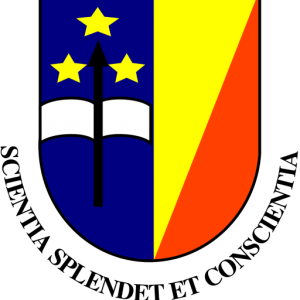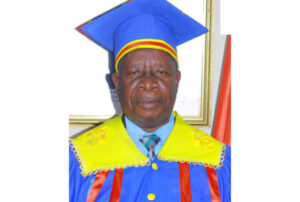Présentation de l’Unikin
2025-12-19 15:04Présentation de l’Unikin

University of Kinshasa
- BP 127 Kinshasa XI
- Internet: www.unikin.ac.cd
- Email: rectorat@unikin.ac.cd
- Email: sg.academique@unikin.ac.cd
- sg.recherche@unikin.ac.cd
- sg.administratif@unikin.ac.cd
- ad.budget@unikin.ac.cd
Founded in 1954 under the name Lovanium University by the Catholic University of Louvain in collaboration with the Belgian Government, it became, through the reforms of 1971 and 1981, respectively the National University of Zaire (UNAZA), Kinshasa Campus and the University of Kinshasa.
Creation date
The University of Kinshasa was established in 1954.
THE HISTORICAL CONTEXT, VISION, MISSION, GOALS AND VALUES OF THE UNIVERSITY OF KINSHASA
Presentation of the University of Kinshasa
The history of the University of Kinshasa began in 1924 with the creation, by the Catholic University of Louvain, of a medical association that was to deal with health and education in Congo. This initiative resulted in the creation, by professors from this university, of the Medical Foundation of the University of Louvain in Congo (FOMULAC), and later in 1927, of the first health facility built in Kisantu in Bas-Congo where the first training course for nurses in Congo took place.
In 1932, the University of Louvain created, on the same site, an agronomy section, to which were added a section of administrative and commercial sciences in 1936, and a section of medical assistants in 1937.
In 1947, these three sections were grouped under the name of "Congolese University Center of Lovanium", which was transferred from the site of Kisantu to that of Kimwenza, and which became the University of Lovanium in 1952, later the University of Kinshasa on the current site of Mount Amba, with an area of 400 hectares.
The first academic year of this new university was inaugurated in 1954 with applications in natural sciences, social and administrative sciences, educational sciences, and agricultural sciences. Finally, the university clinics were established in 1957, which organized the first doctorate in medicine.
The TRIGA (Tranning, Research, Isotope Production Generated in Africa) nuclear reactor was installed in the new university in 1957 for the analysis of biological specimens of animals, plants, seeds, and chemical systems.
Because of its impressive infrastructure, the excellence of its programs, the level and scope of its research activities, and the quality of its hospitality, the new university was, from its inception, the largest and most famous university teaching institution in Central Africa and throughout sub-Saharan Africa. It was in this capacity that it welcomed some African political celebrities, such as Colonel Mengistu Haile Mariam (future President of Ethiopia), Cameroonian Nzo Ekangaki (future Secretary General of the OAU), Egyptian Mahmoud Riad (future Secretary General of the Arab League), and renowned speakers such as Albert Einstein, Igor Prigogine, Haroun Tarzieff, Yves Cousteau, and Cheik Anta Diop.
Nationalized in 1971, Lovanium University became one of the campuses of the National University of Zaire (UNAZA). It regained some of its autonomy in 1981, becoming the University of Kinshasa. This nationalization heralded the decline of the University of Kinshasa, characterized by a progressive deterioration of its assets, a gradual disengagement of the State, which was no longer able to subsidize the University, and a deterioration in the working conditions of students, teachers, researchers, and administrative staff.
The 2004-2005 academic year had a student body of 23,250 spread across ten faculties (1. Agronomy, 2. Law, 3. Economics and Management, 4. Arts and Humanities, 5. Medicine, 6. Pharmacy, 7. Polytechnic, 8. Sciences, 9. Social, Administrative and Political Sciences, and 10. Psychology and Educational Sciences). The academic and scientific staff is composed of 508 full professors, professors, and associate professors; the scientific staff of 700 heads of works, assistants and professional practice managers; the administrative, technical and manual staff of 2,800 agents.
The vision of the University of Kinshasa
The University of Kinshasa intends to maintain the line of excellence established by its founders. It is committed to providing education and training guided by creativity, innovation, and excellence.
The mission and values of the University of Kinshasa
The mission of the University of Kinshasa
The mission of the University of Kinshasa is to make the student and the contribution of this student to the economic and social development of his country, the center of all its training, research, and community development activities.
This mission consists of:
- Provide high-level comprehensive training to young people and adults admitted to the University, enabling them to adapt to society and participate in its development, and specific training adapted to the contingencies of their orientation;
- Meet the reception and support needs of students;
- To make the University a research institution focusing on the excellence of its academic and professional functions;
- Promote the University's contribution to the development of the Kinshasa region in particular, and the Democratic Republic of Congo in general;
- Promote the creation of conditions for the acquisition and development of republican values and respect for collective heritage.
The values of the University of Kinshasa
The University of Kinshasa intends to achieve its mission by subscribing to the fundamental values:
- accessibility, by practicing a policy of access to its programs for all those who wish to pursue university studies, while maintaining rigorous admission criteria;
- quality education, by offering relevant and stimulating training programs that are in step with social and technological transformations in the world, so that graduates can properly integrate into society and play a leading role;
- staff competence, by promoting a stimulating environment for teaching, research and creation, in order to recruit and retain highly competent staff in all its activities;
- excellence in research, development and creation, supporting excellence in both traditional and emerging fields;
- of academic freedom, by safeguarding and protecting the principle of academic freedom and intellectual autonomy, and by providing opportunities to stimulate critical thinking;
- accountability and transparency, by implementing transparent and responsible management practices to ensure the quality of teaching and research programs, as well as the competence of its staff;
- fairness, by prioritizing fairness in the conduct of university affairs and in staff ratings;
- and openness to the world, by opening up to the world, in particular by welcoming international students, through student mobility programs and exchange programs for teaching staff.
The University Anthem
Let the bad weather end.
The sun shines, the sun sings,
And from the top of the hill, the gaze can embrace,
The path ahead, the road to progress.
Walk covered with probity, peace and justice,
Scientia, splendor and conscientia is your ideal.
You will pursue the truth by using truth,
Sciantia, splendor and conscientia is your ideal,
Carry high the sacred torch that enlightens your people,
Scientia, splendor and conscientia is your ideal.
Logo

The Emblem
- The red color symbolizes the blood of martyrs;
- The color yellow symbolizes wealth;
- The color blue symbolizes hope.
L’Université de Kinshasa est située à plus ou moins 25km du centre-ville de Kinshasa, dans la commune de Lemba, plus précisément sur le Mont Amba appelé « Colline inspirée » sur une étendue de 400 hectares.
Rector

Secrétaire Générale Académique

Secretary General for Research

Administrative Secretary General

Budget Administrator

In all faculties, the University of Kinshasa organizes a training program that spans three cycles. The first cycle: the graduate degree, the second cycle: the license plus engineering training, and the third cycle: the doctorate.
Faculties
- Faculty of Law:
- Faculty of Economics and Management:
- Faculty of Letters and Human Sciences:
- Faculty of Medicine:
- Faculty of Dental Medicine
- Faculty of Veterinary Medicine:
- Faculty of Oil, Gas and New Energies:
- Polytechnic Faculty:
- Faculty of Psychology and Educational Sciences:
- Faculty of Sciences:
- Faculty of Agricultural Sciences:
- Faculty of Pharmaceutical Sciences:
- Faculty of Social, Administrative and Political Sciences:
Postgraduate School
Medical Training
- University Clinics of Kinshasa (CUK)
- Neuro-psychopathological Center (CNPP)
- Mont-Amba Hospital Center (CHMA)
Research Centers and Institutes
The University of Kinshasa has the following Research Centers and Institutes:
- Caediology Center;
- Interdisciplinary Center for Political Studies and Documentation (CIEDOP);
- Institute for Contemporary Historical Studies and Research;
- Institute for Economic and Social Research (IRES);
- Center for Research for Development;
- Research Center for the Exploitation of Renewable Energy;
- Drug and Food Analysis Laboratory;
- Center for Parapsychological Studies and Research (CERP);
Regional Postgraduate Schools
- Regional Postgraduate School for Integrated Planning and Management of Tropical Forests and Territories (ERAIFT)
- Economic Policy Management (EPM) Program
- New Interuniversity Postgraduate Program in Economics (NPTCI)
Application Schools
- Mont-Amba Medical Technical Institute (ITM-MA)
- Mont-Amba School Group (GSMA)

